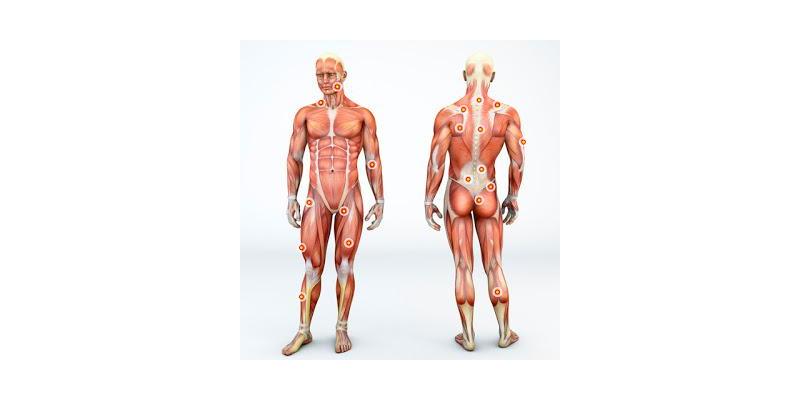Trigger Point Self Massage
Trigger point techniques are used in professional settings to relieve tension, both via massage and dry needling. Here we’ll learn how someone can use trigger point therapy at home, in between therapy appointments.
Who can benefit from manual trigger point therapy?
Trigger points often present as “regional, persistent pain that results in a decreased range of motion of the muscle in question”. It is common for trigger point pain to appear in muscles that maintain posture, during muscle activity. However, trigger points can also present constant pain in rare cases. If you are experiencing these symptoms, it’s possible that you are dealing with a trigger point related issue.
Due to busy schedules, financial obligations and a variety of other real-world circumstances, it’s unlikely that you are able to fit in an appointment every time you need one to professionally alleviate this sort of muscular tension and stiffness. However, that does not nullify the importance of relieving those muscle knots as soon as they arise, rather than waiting until your schedule permits.
Trigger point techniques are widely used by professionals in order to alleviate body stiffness and tension, but recent studies have shown that a manual or at-home trigger point massage can also be highly effective in terms of pain moderation and tension release. Self-massage for trigger points can also have “superior short-term outcomes” for patients struggling with plantar heel pain, in particular.
Finding trigger points for self-massage
The first step in manual trigger point therapy is understanding where and how to find sensitive spots that will assist in overall pain reduction. The most common physical manifestations of a trigger point are:
- Hypersensitive area of muscle that may be slightly harder than usual
- Radiation of pain throughout the area when trigger point is pressed on using fingers or trigger point ball
Tips for at-home trigger point therapy
If you have visited a physician and determined the exact location of your trigger point, trigger point balls can be an excellent tool for providing overall pain reduction by massaging your trigger point. One study compared this sort of trigger point therapy to sham therapy in patients struggling with unilateral shoulder pain caused by pressure points, revealing that the manual trigger point therapy was significantly more effective than the placebo treatment. To use a trigger point ball:
- Position it on the chosen trigger point
- For back or glute pain, place the ball between the floor and the trigger point and slowly roll in order to reduce tension
- For shoulder and upper back, place the ball between a wall and the trigger point
- For neck pain, use the palm to apply pressure to the ball and roll back and forth
If you can’t exactly determine the trigger point that is the root of your generalized muscle pain, using a trigger point foam roller can provide a self-massage that covers a larger surface area of muscle at a time. In addition to trigger point therapy, this type of foam roller can also be used to assist with:
- IT Band injuries
- General muscle tightness
- Exercise recovery
- Yoga or pilates
For a mixture of the localized pressure from the trigger point ball and the more general massage capabilities of the foam roller, we recommend using a spiky massage ball, whose soft spikes rejuvenate muscle by targeting tension and stimulating blood flow, similar to the effects of a professional sports massage. The spiky massage ball is used in the same way as the trigger point balls, but is often used as well for the treatment of aching feet caused by plantar fasciitis.


























